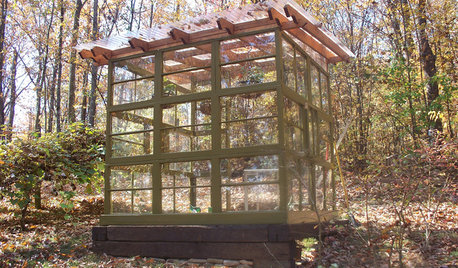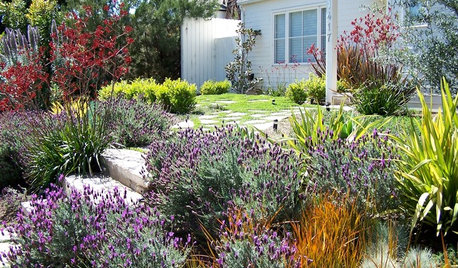if your Plants were out living People lives....
gravyboots
13 years ago
Related Stories

LIFE21 Things Only People Living With Kids Will Understand
Strange smells, crowded beds, ruined furniture — here’s what cohabiting with little monsters really feels like
Full Story
CONTAINER GARDENSHappy Houseplants, Happy People
Potted plants add life and beauty to a room. Learn easy ways to keep them healthy
Full Story
FUN HOUZZSurvey Says: We’re Scared of Being Home Alone — and Spiders
A new Houzz survey reveals that most of us get spooked in an empty house. Find out what’s causing the heebie-jeebies
Full Story
LIFEYou Said It: ‘We’re Here to Stay’ and Other Houzz Quotables
Design advice, inspiration and observations that struck a chord this week
Full Story
GARDENING AND LANDSCAPINGSee a Family Greenhouse Grown From Scraps
Can-do resourcefulness and less than $400 lead to a new 8- by 8-foot home for plants on a Tennessee family's property
Full Story
SAVING WATERGreat Plants for Lush, Low-Water Gardens
Water restrictions making your garden look washed out? Give it living color with unthirsty grasses, flowers and succulents
Full Story
FUN HOUZZ10 Things People Really Don’t Want in Their Homes
No love lost over fluorescent lights? No shocker there. But some of these other hated items may surprise you
Full Story
MOST POPULARThe Perfect Houseplant for People Who Kill Houseplants
If you can fill a jar with water, you can keep golden pothos vine happy — and it will pay you back with cleaner air and a greener home
Full Story
GARDENING GUIDESLet's Weed Out 4 Native Plant Myths
Plant wisely for a garden that supports pollinators and requires less work
Full Story
GARDENING GUIDES6 New Plant Varieties That Beat Out Their Parents
With better resistance and fewer demands, these garden beauties are worth a spot on your wish list
Full Story







birdsnblooms
tapla (mid-Michigan, USDA z5b-6a)
Related Professionals
Parole Landscape Architects & Landscape Designers · Rancho Palos Verdes Landscape Architects & Landscape Designers · Arlington Landscape Contractors · Surprise Landscape Contractors · Azalea Park Landscape Contractors · Bellefontaine Neighbors Landscape Contractors · Costa Mesa Landscape Contractors · Damascus Landscape Contractors · Garland Landscape Contractors · Mahwah Landscape Contractors · Palm Beach Gardens Landscape Contractors · Pleasant Prairie Landscape Contractors · Wailuku Landscape Contractors · Hawaiian Gardens Landscape Contractors · View Park-Windsor Hills Interior Designers & DecoratorsgravybootsOriginal Author
birdsnblooms
gravybootsOriginal Author
brodyjames_gw
birdsnblooms
gravybootsOriginal Author
birdsnblooms
jodik_gw
brodyjames_gw
birdsnblooms
brodyjames_gw
gravybootsOriginal Author
birdsnblooms
brodyjames_gw
birdsnblooms
gravybootsOriginal Author
gravybootsOriginal Author
ChristineSchmidt
cats123
Joe1980
gravybootsOriginal Author
meyermike_1micha